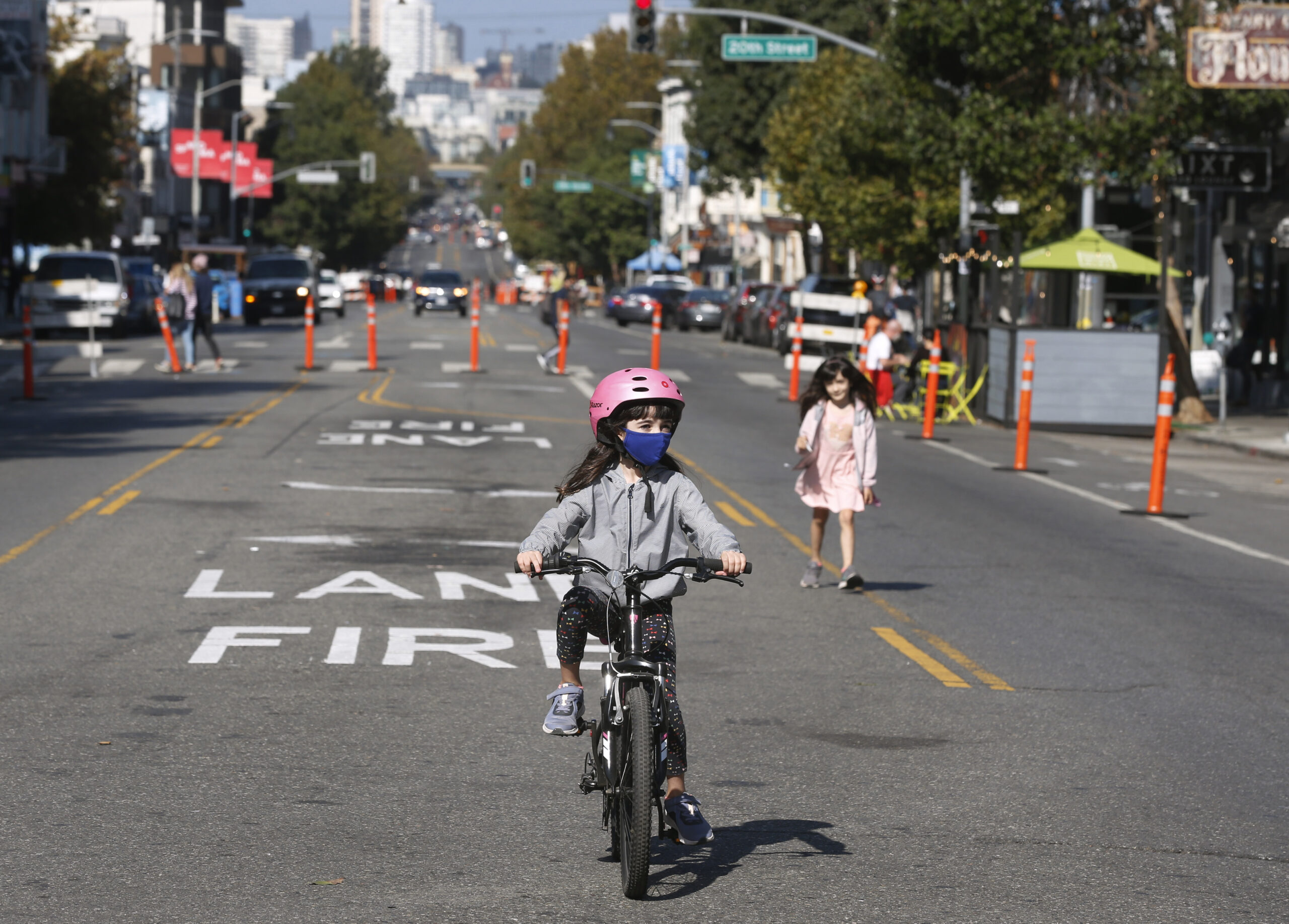The Valencia Corridor Merchants Association is kicking off Saturday a series of car-free days featuring local artists and musicians to draw people to the street.
The portion of Valencia Street from 18th to 21st streets closed at 1 p.m. and will reopen at 10 p.m. in the latest installment of San Francisco’s Shared Spaces program that allows community groups to use streets for all sorts of activities.
Residents can expect the closure every Saturday until Nov. 18, according to Tyler MacNiven, vice president of the merchants association and co-owner of the West of Pecos restaurant.
This year, the association wants to refine the weekly event by collecting and implementing community feedback.
“We found that the feedback we’ve gotten from neighbors and businesses alike is that the street closures only are best when we have street activation,” MacNiven said.
MacNiven said street closure days on Valencia Street had less-than-ideal weather last year and traveling around the neighborhood was difficult.
“It wasn’t that exciting—there were some people walking around in the street but it was hard to get to my restaurant,” MacNiven said. “And if I had trouble getting there, I knew other people did too.”
That memory is one he contrasted with a moment where people entered the street to dance while a DJ was playing music on 19th and Valencia streets last year.
“It was such good music, and without that DJ, we would have walked right by,” he said. “I felt like this is what it is all about. We found it was only really worthwhile closing the street if we can have performances or have something that drew people off the sidewalk into the street to spend more time there.”
This year, the merchants association wants to attract more people and use community input to make sure the closures serve everyone.
“The main thing we are doing differently this time is we are democratizing the activations on the street closure,” MacNiven said. “We are trying to get as many people as possible involved with bringing energy, life and vibrancy to Valencia Street.”
So far, about 20 artists have reached out to bring live performances or display art on the street.
Luke Bornheimer—a safe-streets advocate who has researched traffic along the Valencia corridor—said he was excited for the program to return and hopes it highlights other issues needing work along the corridor.
“While these open street activations are great and help highlight the benefits of opening streets to people while making it safer, the unprotected center cycle track continues to be a liability for people and should be replaced with curbside protected bike lanes immediately while the city looks into pedestrianizing Valencia entirely,” Bornheimer said.
The bus lane curbs in the area present an accessibility issue for people with limited mobility during the car-free events, Bornheimer said.
